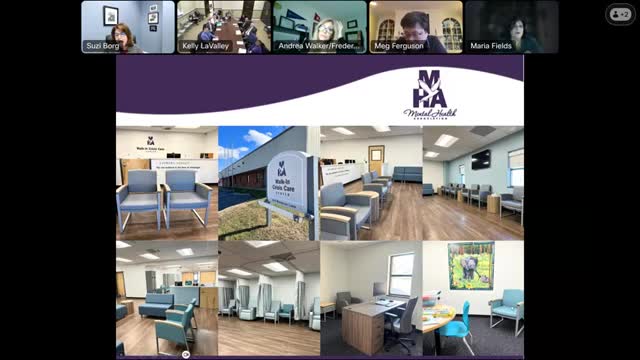Crisis center reports promising youth service outcomes and reduced wait times
March 31, 2025 | Baltimore County, Maryland
This article was created by AI summarizing key points discussed. AI makes mistakes, so for full details and context, please refer to the video of the full meeting. Please report any errors so we can fix them. Report an error »

A new report from the Baltimore County Criminal Justice Coordinating Council highlights a significant increase in youth engagement with mental health services, particularly following the COVID-19 pandemic. The meeting, held on February 11, 2025, showcased data indicating that many young people are now seeking help directly from local crisis centers rather than traditional emergency departments.
The report revealed that 83% of youth who accessed services in fiscal year 2024 successfully connected with necessary resources, a crucial outcome for the community. This proactive approach aims to ensure that students receive timely support, with an average wait time of just under 12 minutes for services—far quicker than typical emergency room visits.
Officials noted that a substantial portion of the youth, approximately 33%, would have otherwise gone to the emergency department if not for the intervention of these crisis services. Remarkably, less than 5% of cases required a referral to higher-level care, suggesting that many young individuals can be effectively supported within the community.
The data also highlighted concerning trends, with 44% of youth reporting suicidal thoughts and 30% indicating substance use issues. The council emphasized the importance of collaboration with schools to improve follow-up care and ensure that students receive the ongoing support they need.
As the council continues to monitor these trends, the focus remains on enhancing service connections and improving mental health outcomes for Baltimore County's youth. The next steps will involve further collaboration with educational institutions and community resources to address the rising demand for mental health services among young people.
The report revealed that 83% of youth who accessed services in fiscal year 2024 successfully connected with necessary resources, a crucial outcome for the community. This proactive approach aims to ensure that students receive timely support, with an average wait time of just under 12 minutes for services—far quicker than typical emergency room visits.
Officials noted that a substantial portion of the youth, approximately 33%, would have otherwise gone to the emergency department if not for the intervention of these crisis services. Remarkably, less than 5% of cases required a referral to higher-level care, suggesting that many young individuals can be effectively supported within the community.
The data also highlighted concerning trends, with 44% of youth reporting suicidal thoughts and 30% indicating substance use issues. The council emphasized the importance of collaboration with schools to improve follow-up care and ensure that students receive the ongoing support they need.
As the council continues to monitor these trends, the focus remains on enhancing service connections and improving mental health outcomes for Baltimore County's youth. The next steps will involve further collaboration with educational institutions and community resources to address the rising demand for mental health services among young people.
View full meeting
This article is based on a recent meeting—watch the full video and explore the complete transcript for deeper insights into the discussion.
View full meeting
